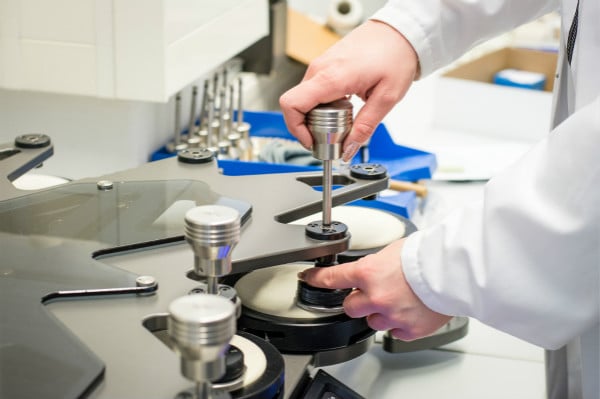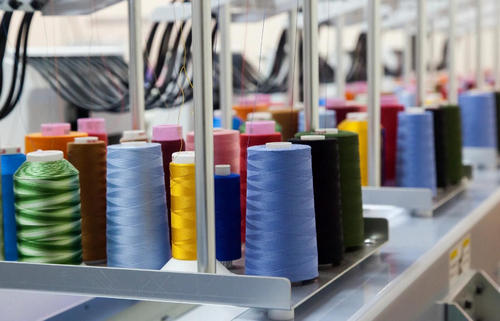- Qinsun Instruments Co., Ltd.
- Tell:+86-21-6780 0179
- Phone:+86-17740808215
- Address:No. 2578 Minhang District Gu Dai Road, Shanghai
- Contact:Mr. Li
- QQ:846490659
6 Tips for Choosing the Right Textile Test Equipment

Textile testing is an essential process for ensuring the quality, performance and safety of textile products. Textile test equipment is used to measure various properties of textiles, such as tensile strength, abrasion resistance, color fastness, flammability and more.
1. Identify your testing objectives and requirements. Before you start looking for textile test equipment, you need to have a clear idea of what you want to test and why. What are the main characteristics of your textile products? What are the specifications and standards that you need to meet? What are the expectations and preferences of your customers? How often do you need to test your products? How much budget do you have for testing? These questions will help you narrow down your options and focus on the most relevant features and functions of the equipment.

2. Compare different types of textile test equipment. Textile test equipment can be classified into different categories based on their functions, such as physical testing, chemical testing, color testing, environmental testing and so on. Each type of equipment has its own advantages and disadvantages, depending on the application and context. For example, physical testing equipment can measure the mechanical properties of textiles, such as strength, elongation, tear resistance and so on. Chemical testing equipment can analyze the composition and quality of textiles, such as fiber content, moisture content, pH value and so on. Color testing equipment can evaluate the color quality and consistency of textiles, such as color difference, color fastness and so on. Environmental testing equipment can simulate the effects of various environmental factors on textiles, such as temperature, humidity, light and so on. You should compare different types of textile test equipment and choose the ones that suit your testing objectives and requirements.
3. Check the accuracy and reliability of the equipment. Accuracy and reliability are two key factors that determine the quality and credibility of your test results. Accuracy refers to how close the test results are to the true value or standard value. Reliability refers to how consistent and repeatable the test results are under the same conditions. You should look for textile test equipment that has high accuracy and reliability, as well as low error rate and variation. You can check the specifications and certifications of the equipment to verify its accuracy and reliability. You can also ask for references or testimonials from other users or experts to get their feedback and opinions.
4. Consider the ease of use and maintenance of the equipment. Textile test equipment should be easy to use and maintain, so that you can save time and effort in operating and servicing it. You should look for textile test equipment that has a user-friendly interface and design, as well as clear instructions and manuals. You should also look for textile test equipment that has low maintenance requirements and costs, as well as long service life and warranty. You can check the features and functions of the equipment to see how easy it is to use and maintain. You can also ask for demonstrations or trials from the suppliers or manufacturers to see how it works in practice.

5. Compare the prices and benefits of different options. Textile test equipment can vary in prices depending on their quality, performance and functionality. You should compare the prices and benefits of different options to see which one offers the best value for money. You should not only consider the initial purchase cost, but also the operating cost, maintenance cost, repair cost and replacement cost over time. You should also consider the benefits that the equipment can bring to your business, such as improved quality control, increased customer satisfaction, enhanced reputation and competitiveness, reduced waste and risk and so on. You should weigh the costs and benefits of different options carefully and choose the one that fits your budget and expectations.
6. Research the reputation and credibility of the suppliers or manufacturers. Textile test equipment is a long-term investment that requires trust and confidence in the suppliers or manufacturers. You should research the reputation and credibility of the suppliers or manufacturers before you make a purchase decision. You should look for suppliers or manufacturers that have a good track record in providing high-quality textile test equipment with excellent customer service and support.
You should also look for suppliers or manufacturers that have a strong presence in your industry or market segment, as well as a good understanding of your needs and challenges. You can check their website, social media platforms, online reviews, ratings,recommendations or awards to get an idea of their reputation and credibility.
Choosing the right textile test equipment can help you save time, money and resources, as well as improve your customer satisfaction and compliance with standards and regulations. However, with so many options available in the market, how do you know which one is best for your needs? Here are 10 tips to help you make an informed decision.





